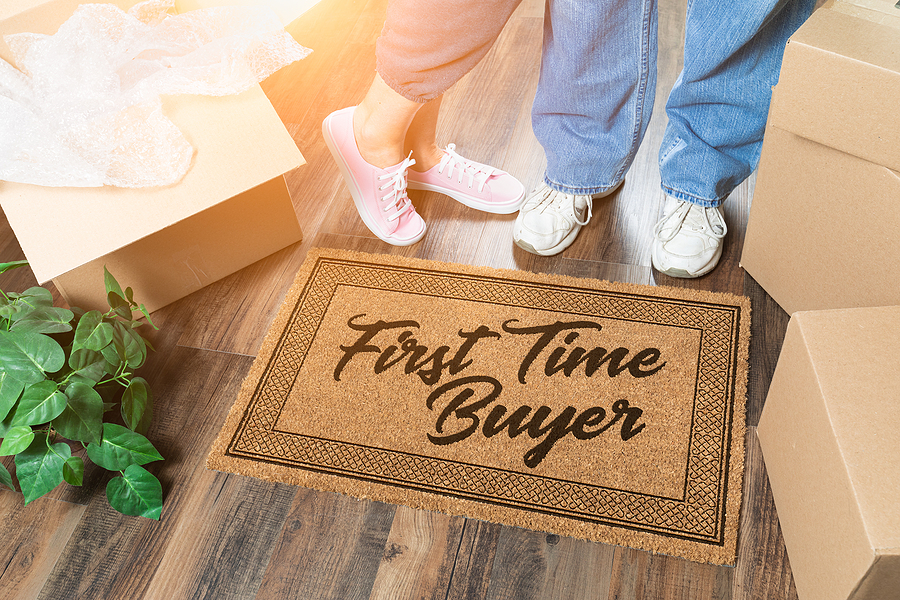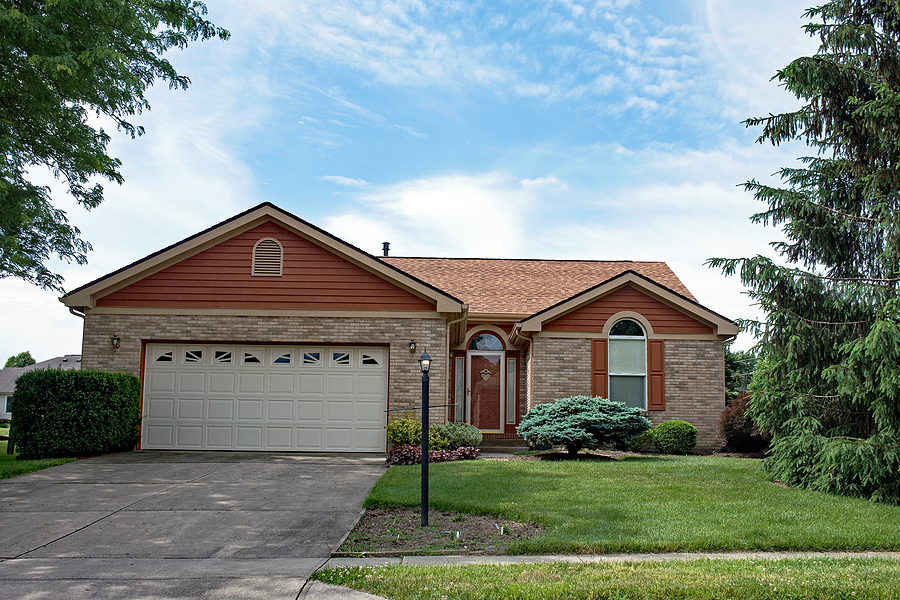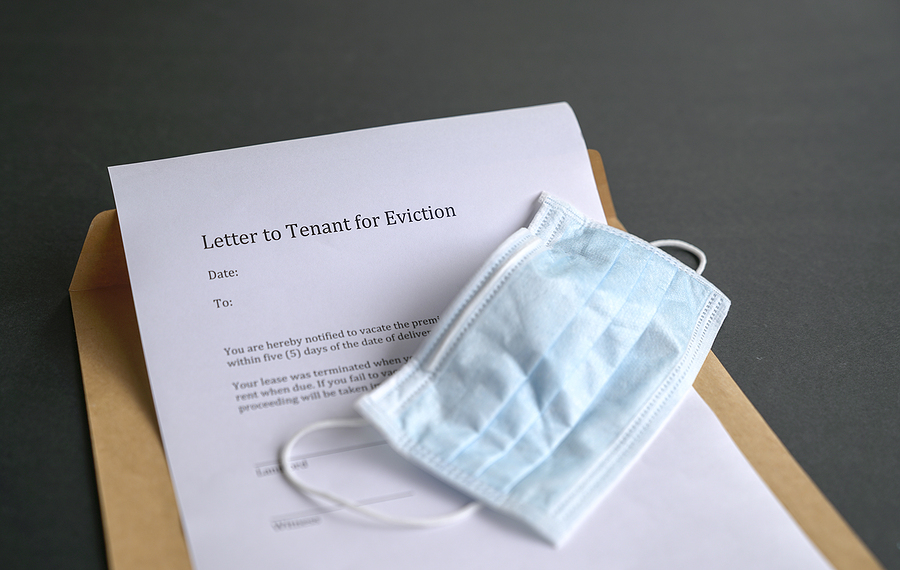What’s the Best Loan for a First-time Home Buyer?

You have already decided that it’s the right time to buy your first house. What’s next?
Buying your first home can feel like the financial equivalent of climbing a mountain, or embarking on some other type of intimidating journey. To be successful you will need to prepare and understand the lay of the land. It won’t be easy, and you may have to weather a few storms along the way. But once you reach the top, all of your hard work will have been worth it and you will have reached an impressive milestone.
In this article, we will focus on one of the most important parts of your planning—understanding the types of mortgages available to first-time homebuyers. You should become familiar with these options so you can choose which one is best for you. There are two top contenders that are typically the best fit, but we will also look at some additional options.
Conventional Mortgage
Basic overview: This is a standard loan offered through private (non-governmental) entities. These loans are sometimes called Fannie and Freddie loans, because they are commonly backed by Freddie Mac and Fannie Mae. That will not affect you day-to-day, but it is good to keep in mind. For example, the forbearance measure in the CARES Act applied to loans backed by Fannie and Freddie, among other types of loans.
Conventional mortgages include “conforming” loans, which adhere to Fannie Mae and Freddie Mac guidelines. As a general rule, a conforming loan cannot exceed $510,400. However, a non-conforming loan that goes over this limit—called a jumbo loan—is still considered “conventional.” First-time homebuyers should not pursue a jumbo loan in most cases.
Best features: Conventional loans may provide the lowest interest rate available for borrowers with great credit. These loans also do not require private mortgage insurance (PMI) premiums except when a borrower makes a down payment of less than 20 percent. Even then, you can get rid of PMI when you reach 20 percent equity.
Qualifying first-time homebuyers can get a conventional loan with a relatively small down payment—as low as three percent (this is called a “97 LTV loan”).
Also, some sellers may look more favorably toward buyers with conventional loans. Sellers may think that these loans are more likely to close on time.
Biggest drawbacks: Good credit is required to get a conventional loan, and excellent credit is required for the best interest rates. Debt-to-income ratio requirements are also stricter than on other loans. Borrowers must make a 20 percent down payment, else be subject to private mortgage insurance, which is an additional monthly cost. Keep in mind that some state programs may provide relief for PMI.
Best for you if: This type of loan is best if you have a very strong credit score. If your score is not in the 700s, you may be better off with an FHA loan. Even with unavoidable mortgage insurance, the FHA loan may come out to be cheaper. But with strong credit, the conventional mortgage is likely best. It is a solid option at any down payment amount of three percent or higher.
FHA Loan
Basic overview: FHA loans are given their name because they are insured by the Federal Housing Administration (FHA). These mortgages are incredibly popular with first-time homebuyers and offer more wiggle room than conventional mortgages.
An FHA loan requires a minimum credit score of 500. However, if your score is between 500 and 579, you will have to make a ten percent down payment. If it is 580 or higher, you can make a down payment of as little as 3.5 percent of the purchase price.
All FHA loans require you to pay mortgage insurance premiums (MIP). You will pay the insurance for a period between 11 years or the life of the loan, depending on the loan-to-value ratio and the loan period. This includes an annual mortgage payment (that is actually paid monthly) and an upfront mortgage payment, though the upfront payment can be rolled into the loan.
There are five types of FHA loans that can be helpful for various situations. We are focusing primarily on the traditional mortgage, which makes for an easy comparison to a conventional mortgage. However, you may want to familiarize yourself with the other options, including the FHA 203(k) loan, also called a renovation loan or construction loan. This type of loan can help you finance major repairs or renovations in the same loan as the home purchase.
Best features: FHA loans are accessible to borrowers with less than stellar credit. You can make a down payment as low as 3.5 percent. There are multiple types of FHA loans that could be even more helpful, depending on your circumstances.
Biggest drawbacks: The terms on FHA loans may not be as good as a conventional mortgage, so if you qualify for a conventional mortgage, then you would want to think through your decision very carefully. You cannot avoid mortgage insurance, and you may have to pay it for the life of the loan.
Best for you if: The FHA loan may be a good fit for you if you have a credit score that does not qualify you for the best conventional loan rates, or you have significant debt but still want to buy a home now (the FHA loan has more relaxed DTI ratio requirements).
Honorable Mentions: VA and USDA Loans
The conventional mortgages and FHA loans are the two heavyweight contenders when it comes to financing options for your first home. However, there are a couple other options that you should at least be aware of in case you may qualify:
1) USDA loans
This program from the United States Department of Agriculture helps homebuyers purchase in approved rural areas. No down payment is required. However, there are restrictions. First, you can only buy under this program in a USDA-approved area. Second, there are also income restrictions, meaning if you make too much money you will not qualify. The credit score requirements are not stringent, making this a potentially solid option for homebuyers looking for homes in rural areas.
2)VA Loans
These loans are backed by the Department of Veterans Affairs and available to active duty military, veterans, and some military spouses. No down payment is required. Borrowers must pay a funding fee, though it can be rolled into the mortgage.
Consider Other Programs, Too
We have discussed some of the most popular mortgage types that may be available to you as a first-time homebuyer. In addition to deciding which loan to apply for, you may also consider homebuyer programs that offer aid to first-time buyers. Here are a few to consider:
- State programs. Your state may have resources for first-time homebuyers. These could include down payment assistance programs, programs for reduced or waived PMI, and others. Check out this database of state programs maintained by NerdWallet.
- HUD’s Neighbor Next Door Program. This special program from HUD encourages “law enforcement officers, firefighters, emergency medical technicians and teachers” to purchase homes in “revitalization areas” by offering a fifty percent discount on the price. See the Neighbor Next Door
- Home Ready and Home Possible. We already touched on conventional loans allowing for a three percent down payment. But you can read about the formal programs that make that possible, along with new programs that may be on the horizon.
Bottom Line
Many first-time homebuyers will decide between a conventional mortgage or an FHA loan. Which of those is best? That likely depends on your credit score. If your score is quite high, then a conventional mortgage with a low interest rate may be the most affordable long-term. If it’s lower (say, under 700), then the FHA loan may come out cheaper, even with its long-term mortgage insurance. You will have to run the calculations based on your own numbers to see which is best.
However, do not forget about the other options available. USDA and VA loans can be attractive options for those who qualify. And, any first-time homebuyer should consider resources available in their state, along with other programs that may provide assistance based on your individual situation.
It is a lot to take in, but taking your time to think through this decision will pay dividends later. Once you have done the proper planning, the rest of your home buying journey will be easier and you will move forward with confidence.
If you would like more help navigating these financing options, or have other questions about the home buying process, then learn more about our Envisioning Home Ownership® program.



